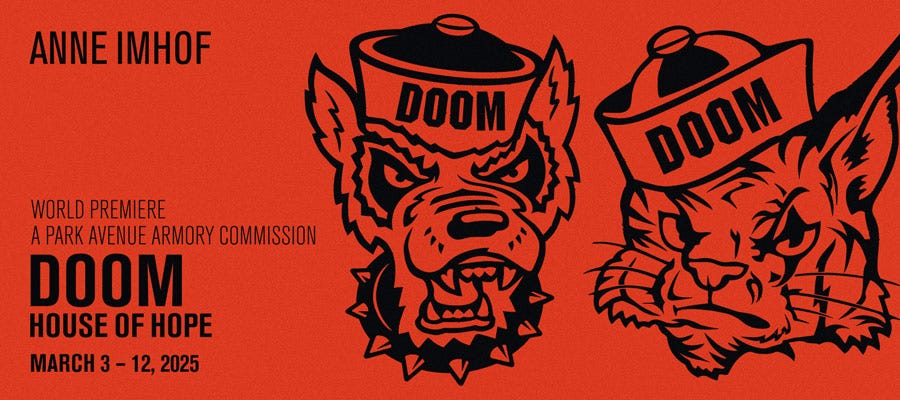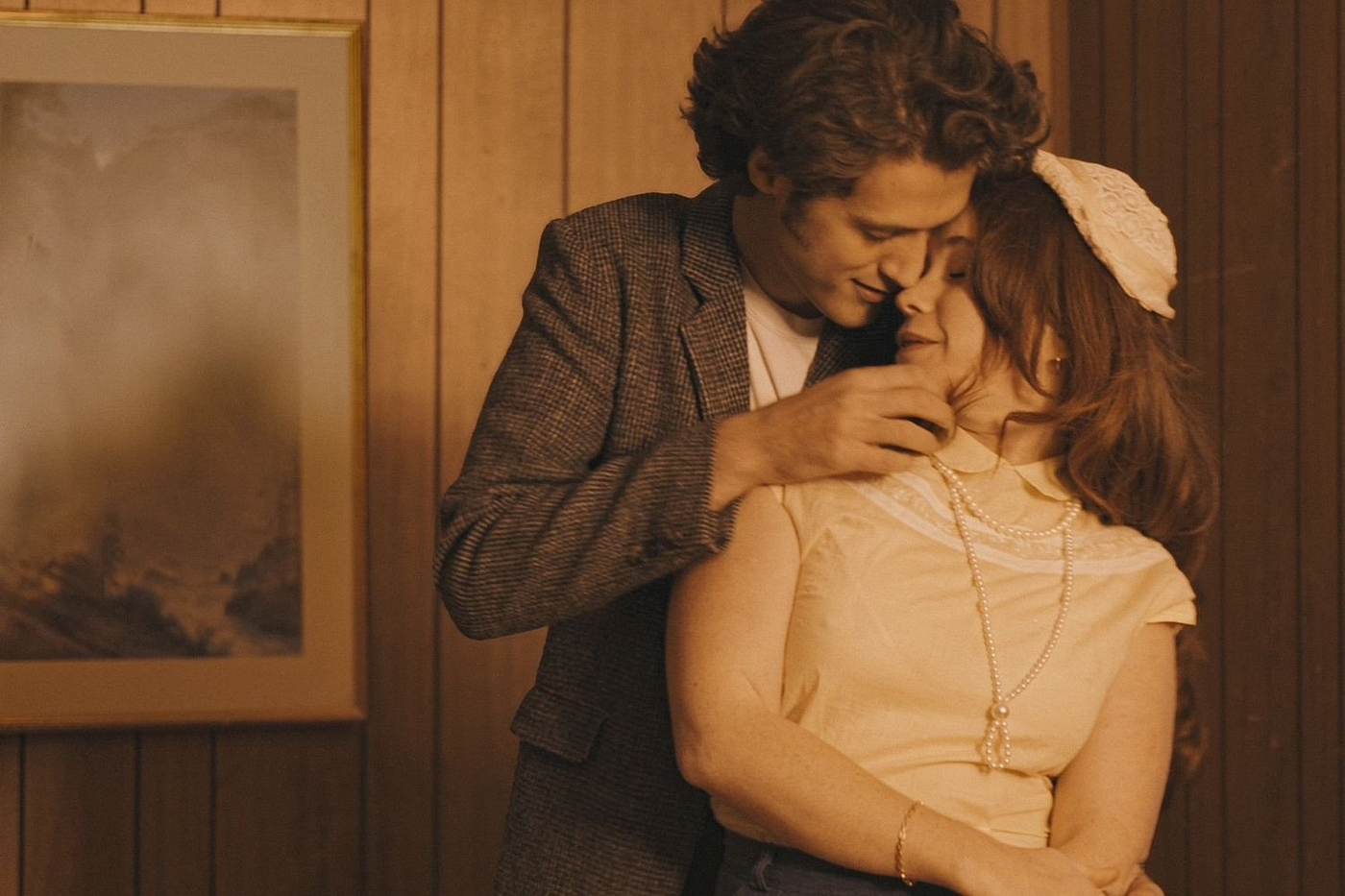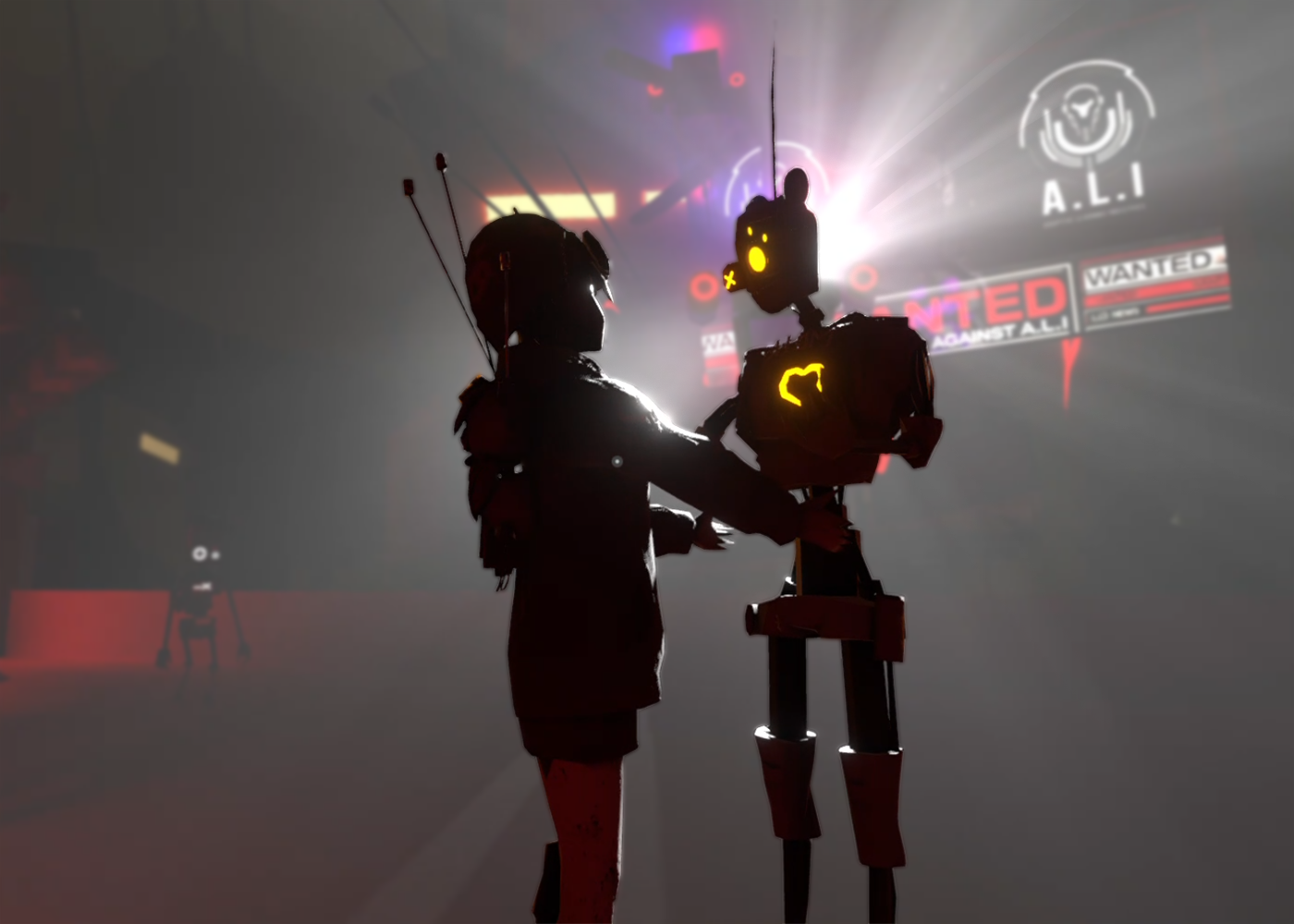Immersive Review Rundown: These Walls Talk, These Phantoms Peak
Experiments in NYC, the new season of London’s Phantom Peak, a Chicago tradition, and more (FIVE REVIEWS)


This week’s set of reviews is substantial, with two from Nicholas Fortugno in NYC, a trip to London’s Phantom Peak through the eyes of our East Coast Editor at large, and Patrick does double duty as both Chicago curator with a review of the new Birch House Immersive and our lead VR theatre reviewer with the latest from the Ferryman Collective.
Let’s dance!
NoPro is 100% reader & listener supported. Join our Patreon campaign to secure & expand our coverage of Everything Immersive! Get the NoPro Newsletter and access to our Discord when you do. You can also GIFT memberships.
Want more? Check out our most recent edition and our REVIEWS section.
Check out our How To Get Covered By NoPro guide to submit your events & experiences for review.
Want to get listed in our newsletter?
Submit a listing to Everything Immersive.

Doom: House of Hope, Anne Imhof
NYC; $50, Run Concluded
Doom is described as a durational performance meant to “blur the line between observer and performer.” In that sense, it succeeded because nothing I saw in the over 75 minutes I spent in this “show” resembled a professional performance. But that’s basically the only successful thing I can say about Doom.
We were first let into the main Wade Thompson Drill Hall where you stood on the floor behind metal barricades facing a field of about 20 black Cadillac SUVs. A jumbotron displayed a 3 hour countdown waiting to start. For 30 minutes, nothing at all happened. Then music softly started and a light glowed in the very back of the space. I imagined something happened at that point, but the performance was also on the floor and when you’re in a crowd 10 people thick, you cannot see floor based performances. I heard a skateboard — I guess someone skated. After about 20 minutes, the barricades were moved so you could wander the space, but nothing changed. Almost all of the performances were ground level.
Due to poor sight lines and the lack of stage, I was only able to clearly see about 10 minutes of content in the piece.
The little I could see did the show no favors. About a dozen 20-something performers dressed in overpriced street clothes climbed atop of the SUVs and barricades to stare moodily or slowly flap their arms like apathetic birds. At one point, they started a lifeless chant of “we’re fucked; we’re dead.” It was like watching a Calvin Klein ad in slow motion on repeat. The website promised commentary on protest and rebellion; what they showed me was the most commercially vapid version imaginable.
There was nothing else to do. The Cadillacs were unlocked, but the staff threw you out if you sat in them. I explored the other sets (a prom stage, cheerleader locker rooms, an inexplicable gamer table playing The Last of Us), but they were lifeless without performers. Eventually, the jumbotron showed someone singing as they walked through the live space but the video was lagging and the audio was indecipherable through the speakers.
Maybe something happened after I left, but there was no way that show was getting another minute of mine. It was a pretentious, nonsensical mess with no regard for the audience whatsoever. Abandon all hope, ye who chose to see this overpriced and insulting handwave at immersive.
— Nicholas Fortugno, New York Correspondent

If Walls Could Talk — RJ Theatre Company
NYC; $54, Run Concluded
Immersive theater is daunting for a new company. There are first the typical theatrical development needs, but you also have to figure out alternative spaces, audience flows, and ancillary materials immersive audiences expect. That’s what makes If Walls Could Talk so interesting — it’s a first time immersive piece from this company, and while the work was early, it’s simply incredible that they got so many hard parts right.
If Walls Could Talk was born from an anonymous solicitation of secrets online. The creators then chose several stories and re-wrote them to occur in a single house. The audience is cast as potential house buyers, and the first 30 minutes is spent in the living room talking to the agent and owners and learning some of the house’s stories. The second half is a tour where each room contains one secret that is enacted as a short scene by actors when the agent shows you the space. These scenes give you glimpses of the history that reveals the drama this house holds.
The stories themselves could have been more potent and integrated. While the scenes were decent, they were four disparate narratives and lacked a compelling center to keep me engaged. The opening scene in the living room dried up too early as there wasn’t enough information to learn. But while the story could use some tightening, the structure of the piece worked beautifully. The house was a terrific set, a soon-to-be-demolished structure that was a believable hand-me-down. The rooms were small, but the agent organized us well in each space so all of us could see and no one blocked the performers. There was a buyer’s guide that gave us the rules of the experience and prepared us for the nature of the show. There was even a neat technique where the agent would start to describe the room and a light would be flipped to start the flashback. It was simple and DIY, but it was tightly executed and held the audience through the show.
If Walls Could Talk is an early compilation work that could use some iteration, but this is less a critique than a praise of an idea with potential. These young creators have shown real skill putting together a functional immersive piece with smart and creative staging. I look forward to the next work with a tighter story and another set of interesting ideas.
— Nicholas Fortugno, New York Correspondent

Lonely Hearts: The Big Dance — Birch House Immersive
$55; Chicago, IL; Run Concluded
Returning for its eighth year, Lonely Hearts: The Big Dance is a clockwork, site-specific live interactive experience from Birch House Immersive. While still without a permanent location, the regular barflies of Rigby’s Tavern have taken residence at Stagg Court’s concession stand in the historic downtown Chicago Athletic Association building. But their (late) yearly St. Valentine’s Day celebration is interrupted as the Basket Belles (literally) storm the court for a basketball practice session. And as tensions between the two groups rises, a heartwarming tale of collaboration and camaraderie emerges on the court.
Using the experience’s parlance, thanks to a decade of perfecting their immersive fundamentals, Birch House executes a halftime comeback play in The Big Dance that’s a slam dunk win.
The experience starts in typical Lonely Hearts fashion, with the audience separated into six groups as barflies, both regular and new, move around interacting with the groups. While my interactions with Giles Henry (Janie Killips) and Mackenize Rigby (Dean Corrin) are thoughtfully poignant, my time with Coach (Mike Vargovich) is fantastically riveting. Encased in a basketball analogy, Coach’s tale of companionship is painfully human and absolutely sincere, accessible to anyone struggling in any kind of relationship. It’s a wonderfully honest and truly vulnerable depiction of a man down on his luck that Vargovich vigorously commits to in a captivating performance.
Get No Proscenium’s stories in your inbox
Join Medium for free to get updates from this writer.
SubscribeSubscribe
And just when I resigned myself to presumably casually chatting with the other three barflies, the Basket Belles’ arrival upends not only my expectations but the experience itself. While the audience remains in separate groups, they’re up on their feet constantly moving around the court, being passed between performers or activities. The Big Dance’s second half feels looser, broadly defined in structure yet is never without focus or objective, with the play — in every sense of the word — occurring on the court being easy to follow on the fly. Birch House’s pivot into utilizing Stagg Court to its fullest extent creates a fantastic home field advantage.
Additionally built up through the second half, The Big Dance’s climax cultivates into a heartwarming message of cooperation over competition. Out of context, they’re the classic cliches about how people are stronger together and there’s more to life than winning. But when expertly and sincerely conveyed by talented artists, it feels profound and provocative. If Birch House has mastered one thing in all these years, it’s building and fostering inclusive communities that seamlessly brings diverse, random audiences successfully together.
Finally, this is the first time I’ve experienced FOMO with Lonely Hearts, saddened to only experience roughly half of the character interactions. I constantly catch myself looking around at the other groups, wondering what charming conversations they’re having currently.
Lonely Hearts: The Big Dance is a delightful mixture of Birch House Immersive’s robust tried-and-true formula and refreshingly bold choices on audience engagement. Chicago’s incredibly fortunate to have such a warm and welcoming group of artists reminding audiences how love and community is what this fractured world needs now more than ever.
– Patrick B. McLean, Chicago Curator & Remote Experiences Editor
Editor’s Note: Dean Corrin, a Birch House Immersive company member, was the reviewer’s professor at DePaul University and previously served as NoPro’s Midwest Curator.
Phantom Peak
£21 — £44; London; Ongoing (Current Season Through May 11th)
I normally don’t love to experience immersive theatre jetlagged, belly stuffed with an enormous afternoon tea, trying to soothe the inevitable jitters that pop up around a wedding (having travelled for the nuptials of NoPro’s own Ellery Weil). However, this surge of adrenaline and sugar might be the best state in which to approach the delirious Phantom Peak.
I’ll admit, I knew little going in. Quickly, I learned that Phantom Peak, in its maze of storefront sets, outdoor lagoons, and steampunk devices to futz with, is a semi-sinister corporate town run by the ever watchful Jonas and his eponymous Jonaco. Freedom fighters, beware though; the audience energy was quickly revealed to be more in line with supporting the corporate masters. We had all been assigned to worker teams to compete in the Jonacon Jonalympics, announced over the Jonavision. Is that a call coming on the Jonagraph? Are we sensing a theme?
Oriented and now additionally infused with a tall prosecco and a pousse-café seemingly made of only the sweetest layered syrups, I was guided by a web-based app through a series of surreal pop-culture parody quests laced through the town’s venues. Could I solve the murder’s surrounding the local bake off, and did they have to do with a haunting in the technical round? Who could have possibly created the shockingly horny, Russian roulette obsessed green speedster and beloved video game mascot, Turbo the Hedgehog? We even got a puppet pantomime starring ace dog-tective, Sherlock Bones, contra his dastardly nemesis, Meow-riarty.
While on the surface this would seem like a scattered collection of gags, each plot weaved in and out of the lives of Phantom Peak’s residents, all gamely played by improv experts. We’d take quick breaks to compete in events, or stop for another frosting-rimmed (delicious) monstrosity in the canteen, then dash between clues on our current quest. Each had a set-piece or physical interaction of some sort, linked by a thread of actor interactions and custom video, including elaborate parody musical numbers. Some even came with set pieces, such as a dive into the “Mirror Maze”, a bizarrely mirrorless obstacle course in the pitch black, where tipsy audience giggles drowned out any of the carnival haunted house noises meant to spook audiences.
If I had any complaint, it’s that some residual elements from prior seasons could confuse first time viewers. A hidden puzzle in the wallpaper instructed me to ask for a “Dramatic Confrontation” at the bar. Thinking I had stumbled upon the secret recipe for a one-on-one or similar, I announced my desire for conflict with pride. Of course, this turned out to be an old puzzle, and I had to slink away, sadly sipping my boozy sugar water, head hung in shame. This could be an artifact of the fact Phantom Peak will soon be moving locations, discouraging more extensive renovation.
Overall, Phantom Peak is a surreal treasure. I squealed with my own delight while embracing my friends’ confusion with out of context photographs and plot elements. While I think even shyer participants would have a ball with the parody videos and elaborate staged opening and finale, Phantom Peak is ideal for deep divers willing to throw caution to the wind and play the silly, sugar scented game with their whole heart.
My evening was an opportunity to improv as a human caricature in a live action comic strip. When I return to visit the happy couple (congrats, Ellery!) I look forward to the opportunity to return to Phantom Peak and embrace its giddy adult Disneyland (and who am I kidding, knock back another tall glass of sweet, sweet Phantom Peak moonshine).
— Blake Weil, East Coast Editor at Large

Uncanny Alley: A New Day
Ferryman Collective and Virtual Worlds Company
2025 SXSW Badge Required; Performed in VRChat; Run Concluded
From Ferryman Collective and Virtual Worlds Company, Uncanny Alley is a live, interactive VR experience with dark ride influences. While optimized for a tethered computer connection, it’s accessible via any VR headset as performances occur in VRChat.
In a dystopian metaverse world, a technology mega-corporation operates with zero oversight, stripping away the populace’s freedom and privacy rights. Fearing all is lost, the cyberpunk hacker Gh0st breaks the audience out of jail, believing escaping to a new metaverse is the only option left. Yet Gh0st’s sentient robot companion, Atom, believes they must stay and fight for their world. With being led through a massive, sprawling metropolis, encountering dozens of its denizens, audiences are forced to contend with harsh realities and difficult choices.
Easily Uncanny Alley is Ferryman Collective’s best experience to date, powered by the experience’s grippingly engrossing and thought provoking narrative. The experience’s dramatic themes hold no punches; Uncanny Alley is a story of today, the narrative struggles mirroring those I navigate daily in 2025. Yet these themes never eclipse the narrative’s plot and forward momentum, always ending on a hopeful note. Additionally, the narrative, like the audience, is always on the move which allows me to emotionally engage without being overwhelmed.
Related, Ferryman Collective’s ability to perform experiences is in peak form. There’s sleek opening and closing credits that ease audiences in and out of the experience, with technical onboarding cleverly engrained into the narrative’s opening. Moving between “set pieces” has never been easier, with no major loading issues. It might not seem important, but these and other seamless elements limit distractions, allowing me to focus on the narrative, deepening the immersion.
Breathing life into the narrative are the multitalented performers. The dozen and a half characters are all performed by only two actors, who also are (presumably) running light, sound, and set change cues simultaneously. While there’s a rotating ensemble of actors, my performance featured Deirdre V. Lyons and Stephen Butchko, two talented actors turning in true tour de force performances. They effortlessly embodied each character I encountered, leaving me in awe of their tremendous range and limitless skill.
But the creative MVP is Rick Treweek, AKA virtual worlds creator and digital artist MetaRick, working on Uncanny Alley’s avatar and production design. Inspired by two digital worlds Treweek created, this experience is a stunning expansion of those dank, claustrophobic Blade Runner like worlds. While having encountered many impressive VRChat worlds, I’ve never encountered such meticulously designed and vividly alive environments. Uncanny Alley’s visuals are awe inspiring, my mouth constantly agape as I look around, taking in every location and NPC with true wonderment.
Though it should be noted that I had an atypical experience. While optimized for up to 12 audience members, only I was present in one of many press preview performances, simply selecting the best option for my schedule. By being only the audience member, every moment of interaction fell to me, quickly transcending me from audience member into an active underground revolutionary. Essentially, the lack of VR novices or unruly audience members definitely afforded me a VIP treatment, but for the betterment of a critical review as I believe there’s something here for everyone.
Regardless of audience size, Uncanny Alley is a fantastic experience, showcasing the artistic prowess of Ferryman Collective who wonderfully exceed their already stellar reputation. In collaborating with Treweek to create the most vividly dynamic and lively VRChat environment I’ve encountered to date, Uncanny Alley is the new banner, must-see pinnacle of immersive VR experiences.
– Patrick B. McLean, Chicago Curator & Remote Experiences Editor
Editor’s Note: NoPro attended a press preview performance remotely prior to SXSW, and reviewed on an untethered Meta Quest 3.
Discover the latest immersive events, festivals, workshops, and more at our new site EVERYTHING IMMERSIVE, home of NoPro’s show listings.
NoPro is a labor of love made possible by our generous Patreon backers. Join them today and get access to our Newsletter and Discord! You can also GIFT memberships.
In addition to the No Proscenium website and our podcast, and you can find NoPro on Bluesky, Facebook, LinkedIn, YouTube, Instagram, and in the Facebook community also named Everything Immersive.